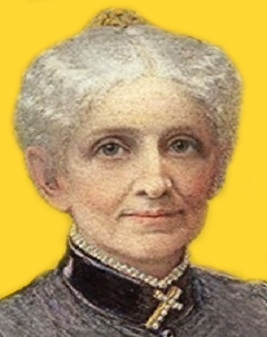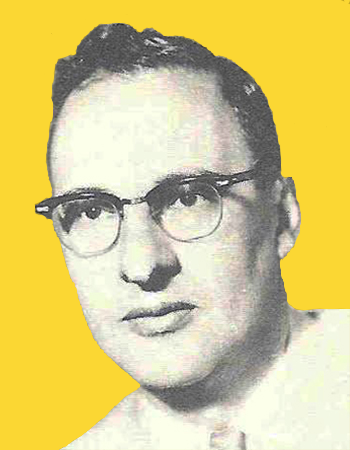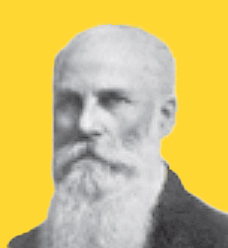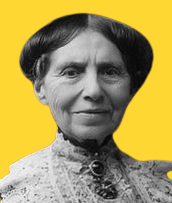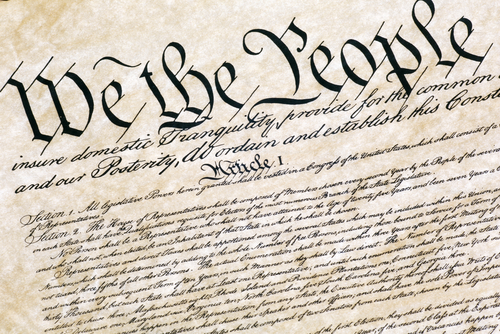Freedom vs Communism, Nazism, Socialism
ACTION to take NOW —!!!
All of planet Earth is faced with this most critical question at this very moment. Mary Baker Eddy warned us of this time in history. We can ignore and suffer the consequences or we can face it and nullify the effect of it making its mark on the history of the world. This treatment tells us how to do it.

Truth ~ Can It Be Indicted, Arrested, Imprisoned ---???
DEFINITIONS
Indict ~ speak, accuse (NW 1828)
Arrest ~ stop, rest, take, seize, hinder, restrain (NW 1828)
Imprison ~ safe custody, confine (NW 1828)
God ~ Incorpeal, divine, supreme, infinite Mind, Spirit, Soul, Principle, Life, Truth, Love ~ Science & Health p. 465)
TOPICS:
Dark Ages
Sodom & Gomorrah
Communism, Nazism, Socialism
Constitution of United States of America ~ Freedom
Dimming of the sun ~ Ice age in process
Precipice
AUTHORS & OTHERS REFERENCED:
Daniel ~ Lion's den
Jesus ~ crucification, tomb, corporeality
Mary Baker Eddy ~ prophesy, transporting, corporeality
Dr Robert C Putnam ~Bible Scholar
Wentworth Winslow ~ Author
Messengers of God active right now
ACTION TO TAKE NOW ---!!! What is it ?
IT WAS AN ANTI-INTELLECTUAL and a theoretical movement, emphasizing the will of the charismatic dictator as the sole source of inspiration of a people and a nation, as well as a vision of annihilation of all enemies of the Aryan Volk as the one and ONLY GOAL FOR NAZI POLICY ~ excerpt.
Who is Involved ?
THE ROOTS OF NAZISM ~ Nazism had peculiarly German roots. It can be partly traced to the Prussian tradition as developed under Frederick William I (1688–1740), Frederick the Great (1712–68), and Otto von Bismarck (1815–98), which regarded the militant spirit and the discipline of the Prussian army as the model for all individual and civic life.
NAZISM ~ Encyclopedia Britannica TOTALITARIAN MOVEMENT LED BY ADOLF HITLER as head of the Nazi Party in Germany. In its intense nationalism, mass appeal, and dictatorial rule, Nazism shared many elements with Italian fascism. However, Nazism was FAR MORE EXTREME both in its ideas and in its practice. In almost every respect it was an anti-intellectual and a theoretical movement, emphasizing the will of the charismatic dictator as the sole source of inspiration of a people and a nation, as well as a vision of annihilation of all enemies of the Aryan Volk as the ONE AND ONLY GOAL of Nazi policy. THE ROOTS OF NAZISM Nazism had peculiarly German roots. It can be partly traced to the Prussian tradition as developed under Frederick William I (1688–1740), Frederick the Great (1712–68), and Otto von Bismarck (1815–98), which regarded the militant spirit and the discipline of the Prussian army as the model for all individual and civic life. To it was added the tradition of political romanticism, with its sharp hostility to rationalism and to the principles underlying the French Revolution, its emphasis on instinct and the past, and its proclamation of the rights of Friedrich Nietzsche’s exceptional individual (the Übermensch [“Superman”]) over all universal law and rules. These two traditions were later reinforced by the 19th-century adoration of science and of the laws of nature, which seemed to operate independently of all concepts of good and evil. Further reinforcements came from such 19th-century intellectual figures as the comte de Gobineau (1816–82), Richard Wagner (1813–83), and Houston Stewart Chamberlain (1855–1927), all of whom greatly influenced early Nazism with their claims of the racial and cultural superiority of the “Nordic” (Germanic) peoples over all other Europeans and all other races. Hitler’s intellectual viewpoint was influenced during his youth not only by these currents in the German tradition but also by specific Austrian movements that professed various political sentiments, notably those of pan-Germanic expansionism and anti-Semitism. Hitler’s ferocious nationalism, his contempt of Slavs, and his hatred of Jews can largely be explained by his bitter experiences as an unsuccessful artist living a threadbare existence on the streets of Vienna, the capital of the multiethnic Austro-Hungarian Empire. This intellectual preparation would probably not have been sufficient for the growth of Nazism in Germany but for that country’s defeat in World War I. The defeat and the resulting disillusionment, pauperization, and frustration—particularly among the lower middle classes—paved the way for the success of the propaganda of Hitler and the Nazis. The Treaty of Versailles (1919), the formal settlement of World War I drafted without German participation, alienated many Germans with its imposition of harsh monetary and territorial reparations. The significant resentment expressed toward the peace treaty gave Hitler a starting point. Because German representatives (branded the “November criminals” by Nazis) agreed to cease hostilities and did not unconditionally surrender in the armistice of November 11, 1918, there was a widespread feeling—particularly in the military—that Germany’s defeat had been orchestrated by diplomats at the Versailles meetings. From the beginning, Hitler’s propaganda of revenge for this “traitorous” act, through which the German people had been “stabbed in the back,” and his call for rearmament had strong appeal within military circles, which regarded the peace only as a temporary setback in Germany’s expansionist program. The ruinous inflation of the German currency in 1923 wiped out the savings of many middle-class households and led to further public alienation and dissatisfaction. Hitler added to Pan-Germanic aspirations the almost mystical fanaticism of a faith in the mission of the German race and the fervour of a social revolutionary gospel. This gospel was most fully expressed in Hitler’s personal testament Mein Kampf (1925–27; “My Struggle”), in which he outlined both his practical aims and his theories of race and propaganda. Posing as a bulwark against communism, Hitler exploited the fears aroused in Germany and worldwide by the Bolshevik Revolution in Russia and the consolidation of communist power in the Soviet Union. Thus, he was able to secure the support of many conservative elements that misunderstood the totalitarian character of his movement. Hitler’s most important individual contribution to the theory and practice of Nazism was his deep understanding of mass psychology and mass propaganda. He stressed the fact that all propaganda must hold its intellectual level at the capacity of the least intelligent of those at whom it is directed and that its truthfulness is much less important than its success. According to Hitler: It is part of a great leader’s genius to make even widely separated adversaries appear as if they belonged to but one category, because among weakly and undecided characters the recognition of various enemies all too easily marks the beginning of doubt of one’s own rightness. Hitler found this common denominator in the Jewish people, whom he identified with both Bolshevism and a kind of cosmic evil. Jews were to be discriminated against not according to their religion but according to their “race.” Nazism declared Jews—whatever their educational and social achievements—to be forever fundamentally different from and inimical to Germans. Nazism attempted to reconcile conservative, nationalist ideology with a socially radical doctrine. In so doing, it became a profoundly revolutionary movement—albeit a largely negative one. Rejecting rationalism, liberalism, democracy, the rule of law, human rights, and all movements of international cooperation and peace, it stressed instinct, the subordination of the individual to the state, and the necessity of blind and unswerving obedience to leaders appointed from above. It also emphasized the inequality of humans and races and the right of the strong to rule the weak; sought to purge or suppress competing political, religious, and social institutions; advanced an ethic of hardness and ferocity; and partly destroyed class distinctions by drawing into the movement misfits and failures from all social classes. Although socialism was traditionally an internationalist creed, the radical wing of Nazism knew that a mass base existed for policies that were simultaneously anticapitalist and nationalist. However, after Hitler secured power, this radical strain was eliminated. TOTALITARIANISM and EXPENSIONISM Working from these principles, Hitler carried his party from its inauspicious beginnings in a beer cellar in Munich to a dominant position in world politics 20 years later. The Nazi Party originated in 1919 and was led by Hitler from 1920. Through both successful electioneering and intimidation, the party came to power in Germany in 1933 and governed through totalitarian methods until 1945, when Hitler committed suicide and Germany was defeated and occupied by the Allies at the close of World War II. The history of Nazism after 1934 can be divided into two periods of about equal length. Between 1934 and 1939 the party established full control of all phases of life in Germany. With many Germans weary of party conflicts, economic and political instability, and the disorderly freedom that characterized the last years of the Weimar Republic (1919–33), Hitler and his movement gained the support and even the enthusiasm of a majority of the German population. In particular, the public welcomed the strong, decisive, and apparently effective government provided by the Nazis. Germany’s endless ranks of unemployed rapidly dwindled as the jobless were put to work in extensive public-works projects and in rapidly multiplying armaments factories. Germans were swept up in this orderly, intensely purposeful mass movement bent on restoring their country to its dignity, pride, and grandeur, as well as to dominance on the European stage. Economic recovery from the effects of the Great Depression and the forceful assertion of German nationalism were key factors in Nazism’s appeal to the German population. Further, Hitler’s continuous string of diplomatic successes and foreign conquests from 1934 through the early years of World War II secured the unqualified support of most Germans, including many who had previously opposed him. Despite its economic and political success, Nazism maintained its power by coercion and mass manipulation. The Nazi regime disseminated a continual outpouring of propaganda through all cultural and informational media. Its rallies—especially its elaborately staged Nürnberg rallies—its insignia, and its uniformed cadres were designed to impart an aura of omnipotence. The underside of its propaganda machine was its apparatus of terror, with its ubiquitous secret police and concentration camps. It fanned and focused German anti-Semitism to make the Jews a symbol of all that was hated and feared. By means of deceptive rhetoric, the party portrayed the Jews as the enemy of all classes of society. Nazism’s principal instrument of control was the unification, under Heinrich Himmler and his chief lieutenant, Reinhard Heydrich, of the SS (the uniformed police force of the Nazi Party) and all other police and security organizations. Opposition to the regime was destroyed either by outright terror or, more frequently, by the all-pervading fear of possible repression. Opponents of the regime were branded enemies of the state and of the people, and an elaborate web of informers—often members of the family or intimate friends—imposed utmost caution on all expressions and activities. Justice was no longer recognized as objective but was completely subordinated to the alleged needs and interests of the Volk. In addition to the now-debased methods of the normal judicial process, special detention camps were erected. In these camps the SS exercised supreme authority and introduced a system of sadistic brutality unrivaled in modern times. Between 1938 and 1945 Hitler’s regime attempted to expand and apply the Nazi system to territories outside the German Reich. This endeavour was confined, in 1938, to lands inhabited by German-speaking populations, but in 1939 Germany began to subjugate non-German-speaking nationalities as well. Germany’s invasion of Poland on September 1, which initiated World War II, was the logical outcome of Hitler’s plans. His first years were spent in preparing the Germans for the approaching struggle for world control and in forging the military and industrial superiority that Germany would require to fulfill its ambitions. With mounting diplomatic and military successes, his aims grew in quick progression. The first was to unite all people of German descent within their historical homeland on the basis of “self-determination.” His next step foresaw the creation, through the military conquest of Poland and other Slavic nations to the east, of a Grosswirtschaftsraum (“large economic unified space”) or a Lebensraum (“living space”), which thereby would allow Germany to acquire sufficient territory to become economically self-sufficient and militarily impregnable. There the German master race, or Herrenvolk, would rule over a hierarchy of subordinate peoples and organize and exploit them with ruthlessness and efficiency. With the initial successes of the military campaigns of 1939–41, his plan was expanded into a vision of a hemispheric order that would embrace all of Europe, western Asia, and Africa and eventually the entire world. The extravagant hopes of Nazism came to an end with Germany’s defeat in 1945, after nearly six years of war. To a certain extent World War II had repeated the pattern of World War I: great initial German military successes, the forging of a large-scale coalition against Germany as the result of German ambitions and behaviour, and the eventual loss of the war because of German overreaching. Nazism as a mass movement effectively ended on April 30, 1945, when Hitler committed suicide to avoid falling into the hands of Soviet troops completing the occupation of Berlin. Out of the ruins of Nazism arose a Germany that was divided until 1990. Remnants of Nazi ideology remained in Germany after Hitler’s suicide, and a small number of Nazi-oriented political parties and other groups were formed in West Germany from the late 1940s, though some were later banned. In the 1990s gangs of neo-Nazi youths in eastern Germany staged attacks against immigrants, desecrated Jewish cemeteries, and engaged in violent confrontations with leftists and police. In the early 21st century, small neo-Nazi parties were to be found in most European countries as well as in the United States, Canada, and several Central and South American countries. They were rare, but not unheard of, in the rest of the world.Show all
Notes taken from 1943 Association Address I should like to say something about Socialism. At the beginning, may I state my position in this matter. After a considerable amount of research, I know that Christian Science and Socialism are opposites. As your teacher, I assume it my duty and privilege to set before you certain ideas regarding this subtle subject. To an American, the term ‘socialism’ is a natural antipathy, for instinctively he recoils from anything, which he believes advocates the destruction or tearing down of his prized heritage of individual freedom. For this reason the Socialist Party, per se, receives very little support.... CLICK PDF to view or download complete article PDF
Excerpt 1949 Association Paper It is important to know what freedom is and how it is accomplished. It is not just by the rejection of error, but to know a thing is not true. It is the individual alone who can make evil an unreality. Actually, freedom begins with the rejection of error. Freedom comes to the beholder first, and this is divine freedom -- the only freedom there is. What is freedom? There are many opinions but Christian Science supplies the only answer. A Christian Scientist understands freedom. Divine Science interprets “I am free.” It must be freedom, not license. CLICK to view or download complete article PDF
Constitution of the United States of America ~ Do we want to void it and go Communist ???
Is the Constitution worth saving?
Is America worth saving?
Is Christian Science worth saving?
Or shall we let “OTHERS” determine our future while
We own nothing, eat bugs, & be happy per the New World Order?
Congress is forbidden to interfere with freedom of:
Religion Speech Press Assembly Petition To Bear Arms No Search No Seizure No Self-Incrimination Due Process Jury Trial Right to Confront & to Counsel No Excess Bail or Fines No Cruel & Unusual Punishment
The Founding Fathers of America, came to America to escape the oppression & suppression of the Kings and religious tyrants of Europe.
AMERICA ~ LAND of the FREE America was founded as a sanctuary for a new homeland with legal protections built into its newly formed Constitution of the United States of America for the benefit of its inhabitants. As can be seen in the image above on the right, it is for: 'WE THE PEOPLE' and includes inherent protections against the unlimited powers like those exercised by the corrupt controlling governments and religious rulers of their European homelands.
MOST FREEDOM on PLANET EARTH To assure this, the special Constitution of America was written in a way so that America was deemed the most free country on Planet Earth.
AMERICA WAS ONLY PLACE for CHRISTIAN SCIENCE to BEGIN Mary Baker Eddy stated it was the only geographic location where Christian Science could be founded for this very reason. Christian Science is the only religion that promotes self-government wherein that self-imposed government is for the blessing of all mankind and is based on there being one God.
DEFINITION of GOD God is incorporeal, divine, supreme, infinite Mind, Spirit, Soul, Principle, Life, Truth, Love. Science & Health p.465
GOD GOOD ~ NOT EVIL God is good only. God is not the source of any evil whatsoever ~ not a single storm, destruction, sin, disease, or death.
CHRISTIAN SCIENCE is SCIENCE LIKENED TO MATH or MUSIC ~ NOT A CHURCH There is no hierarchy in Christian Science and it is not dependent on any kind of bureaucracy, church building, ruling officers, or on any single or group of persons whatsoever any more than Mathematics, or Music.
DR ALBERT EINSTEIN Christian Science is a Science ~ the highest form of Science. This is what Dr. Albert Einstein thinks of Mary Baker Eddy, the Textbook of Christian Science, and Christian Science itself ~ please CLICK.
The only definition of church as clearly stated in the Glossary of the Textbook of Christian Science, Science and Health with Key to the Scriptures by Mary Baker Eddy, is:
REAL DEFINITION OF CHURCH IN GLOSSARY The structure of Truth and Love; whatever rests upon and proceeds from divine Principle. The Church is that institution, which affords proof of its utility and is found elevating the race, rousing the dormant understanding from material beliefs to the apprehension of spiritual ideas and the demonstration of divine Science, thereby casting out devils, or error, and healing the sick. CHURCH ~ SPIRITUAL INSTITUTION ~ NOT A BUILDING OR PEOPLE As can be seen from her definition above, church is a spiritual institution, not a physical structure or group of people. Mary Baker Eddy highly resisted there being a church structure and insisted that one will grow out of that need once one elevates sufficiently to see that all needs are fulfilled as one thinks, talks, and lives the qualities noted in the definition of God as stated herein.Show all

